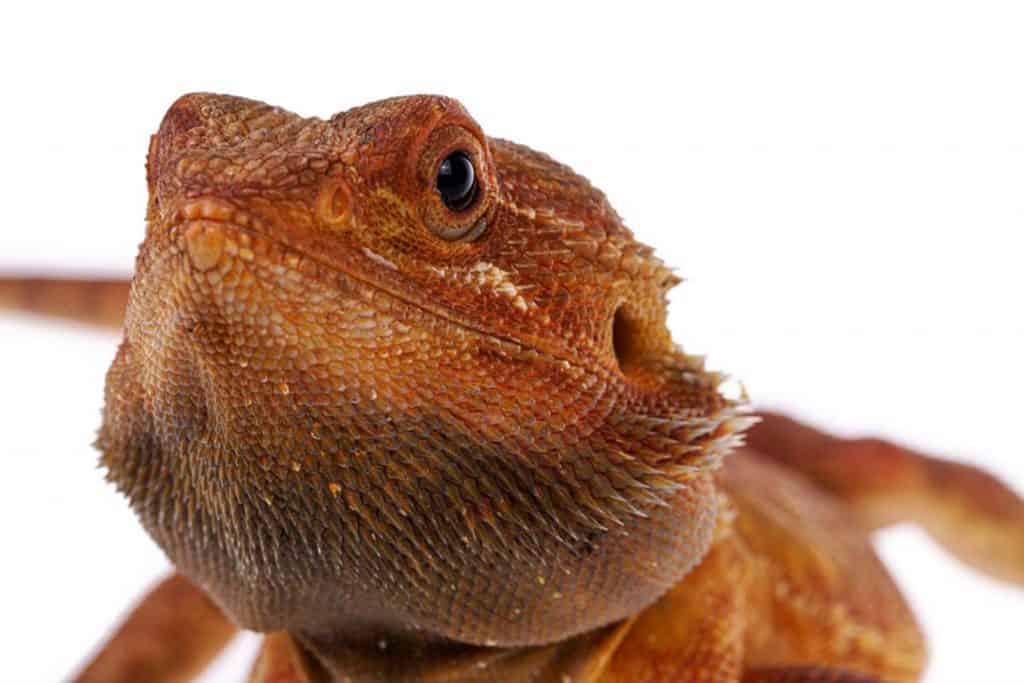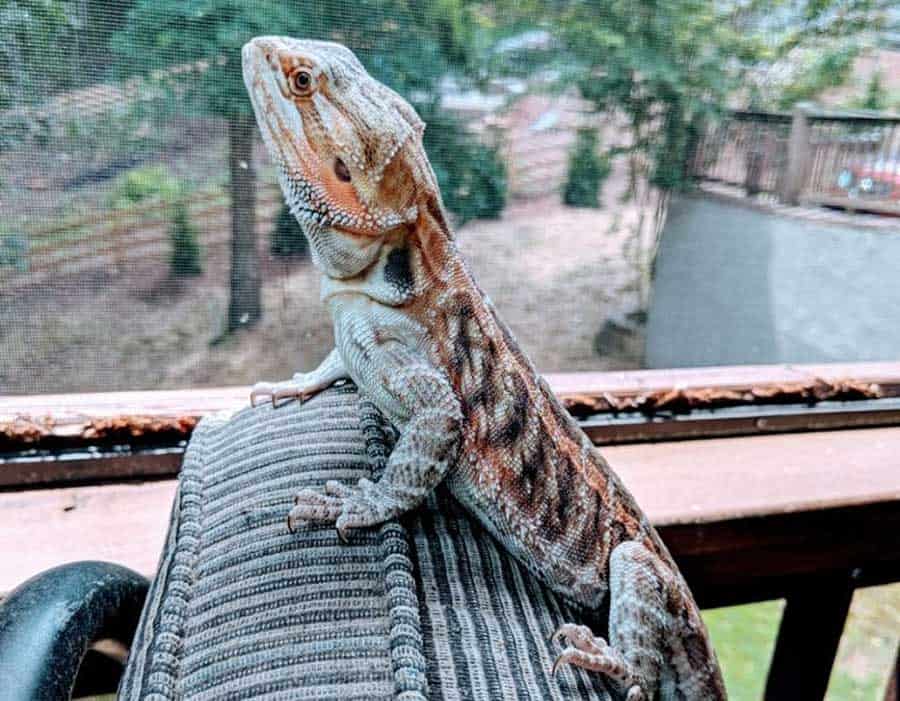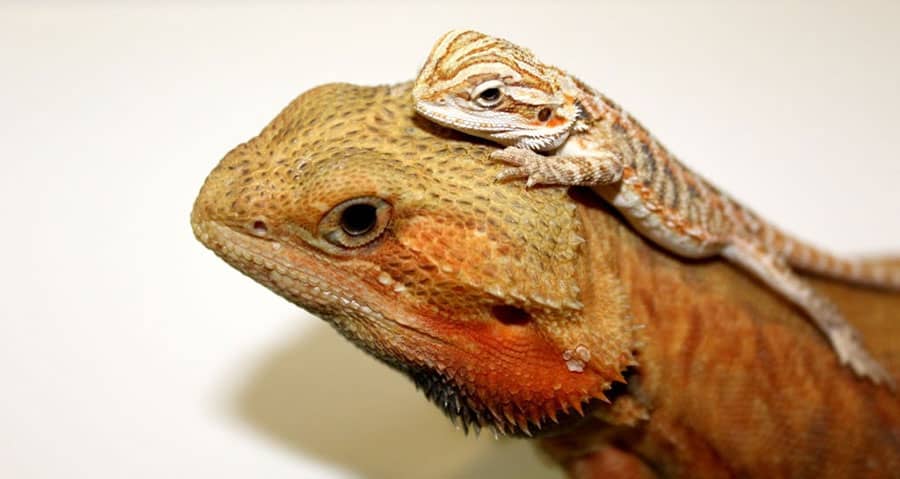
Bearded dragons make awesome pets, and while shopping for one you might have wondered: is there a difference between “fancy” and “normal” bearded dragons? Or, if you’ve only just now heard of them, you’re probably thinking: what on earth is a fancy bearded dragon? Not to worry; we have got you covered!
What’s the Difference Between A Fancy Bearded Dragon and A Bearded Dragon? The main difference lies in their physical appearance. Both types share the same general care requirements and behavior, I personally think the choice between them ultimately comes down to personal preference for the distinct and captivating aesthetic of the fancy varieties.
Central bearded dragons, also known as inland bearded dragons, are commonly split into two groups by breeders and pet shops. The most common type of bearded dragon is called the wild type while the other group, which is usually bred for a unique color pattern on their scales, is known as fancy. In this article, you will find a more detailed description of what a normal bearded dragon is and what a fancy bearded dragon is.
These descriptions will tell you exactly what the differences are between the two groups and how they can affect their husbandry needs as well as your pocket. We will also go through our top five favorite fancy bearded dragon morphs!
Fancy Bearded Dragon vs Bearded Dragon
The main differences between bearded dragons vs fancy bearded dragons are:
- Normal bearded dragons are ones found in the wild, whereas fancy bearded dragons are selectively bred.
- Normal bearded dragons come in camouflage colors like brown or tan to blend with their surroundings, whereas fancy bearded dragons can have brighter colors and more unusual patterns.
Normal Bearded Dragon Appearance
Normal bearded dragons, or common bearded dragons are known as the wild type. They are the bearded dragons that you are most commonly kept as pets. They come from the genus Pogona and they originate from Australia.
While there are actually eight different species of bearded dragons that exist in the wild, the Pogona vitticeps, also known as the central or inland bearded dragon, is the one most commonly kept as a pet. “Normal” bearded dragons within this species, or wild types, are usually brownish in color with darker splotches along its sides and a light beige line running down its spine.
The wild type can vary slightly in color from brown to tan to cream-colored. Their patches of color are a darker shade than their overall coloring and are always irregular.
Their coloring and markings are used as camouflage in the wild. The mottled and irregular dull colors help them blend in with their desert surroundings, which makes it more difficult for predators to spot them.
The wild type, like most bearded dragons, has spikes on its beard, along the sides of its chin, and down the sides of its body. They also have spikes on the tops of their heads along their brow ridges.
Fancy Bearded Dragon Appearance
All fancy bearded dragons are also of the Pogona vitticeps species. The difference between the wild type and the fancy type is the fancy type was selectively bred by humans to have bright colors and distinct patterning. Just like humans bred dogs and cats to have distinct features, we have also bred bearded dragons to have a variety of different colors, patterns, and features!

Where wild types or normal bearded dragons will blend in perfectly in the Australian Outback, a fancy bearded dragon would stand out like a sore thumb and get snatched up by predators instantly. Thankfully, you’ll probably never see a fancy bearded dragon out in the wild, unless it’s been carelessly abandoned by its owner. This means captive fancy dragons don’t typically need to worry about predators.
Fancy bearded dragons are now available in many unique colors and patterns, from shades of vibrant orange, red, and yellow to even solid white or grey. They can have zig-zags, S-curves, regular striping, or even solid colors with no patterning at all. These traits are bred for because they look distinct and interesting.
Some of the characteristics include the color and stiffness of their spikes. Some morphs have larger spikes and some have none at all.
Some fancy beardies will also have minimal scale differentiation. This means their skin is very smooth and their scales can be almost nonexistent. Some fancy dragons have even been bred for smooth “scaleless” appearance, and even translucence. These are known as silkbacks, and they’re quite rare!
Other interesting physical characteristics bred into fancy beardies include the color and stiffness of their spikes. Some morphs have larger spikes and some have none at all.
How a Fancy Beardie Is Made
To create these unique fancy dragons, breeders typically take two bearded dragons who have the desired physical characteristics, either from a genetic mutation or many generations of careful breeding, and breed them together. They then carefully examine the clutch that was produced to identify which offspring has the characteristics.
Here’s an example of how this process works:
Male 1 has reddish skin and an almost black stripe down its back. Female 1 has reddish skin. A breeder will breed these two dragons in hopes of getting offspring that have red skin with black markings.
Next, the breeder picks out two beardies from Male 1 and Female 1’s clutch that have the reddest skin and the darkest patterning and breeds them together. This continues for a number of generations until the perfect red coloring and dark markings are created and become a standard morph.
This process is why fancy bearded dragons or morphs are so expensive. Their breeding process takes a lot of effort, care, and time.
The scientific terminology and details of the process can be quite complicated, but it’s only necessary to understand if you are interested in breeding your fancy beardie to create more. There are now many breeders which proudly sell their many handsome and unique color morphs for you to choose from if you’re willing to pay a bit more than you would for a wild type dragon.
Normal vs Fancy Dragons: Behavioral Similarities
Although their appearances can be vastly different, normal and fancy bearded dragons are still of the same species and have much of the same care needs and behaviors. They do have some interesting differences, though, particularly in the case of silkback and leatherback dragons due to their unique skin texture.
Diet
Like we mentioned above, since both normal and fancy dragons are the same species, they eat the same diet. Both groups are omnivorous and need to eat a balanced diet of plant matter and insect protein. The portioning of their diet will be determined by their age and size and not by their physical appearance.
Behavior
Normal beardies and fancy ones also have the same physical behaviors such as head bobbing, arm waving, digging, and hissing.
All of these behaviors will be done for the same reasons. This means fancy beardies and normal bearded dragons are able to communicate with each other even though they often look drastically different.
Care Requirements
All care requirements are the same for wild types and fancy bearded dragons with two notable exceptions.
The silkback and leatherback morphs are very sensitive to harsh sunlight and require some extra care particularly when shedding because they are scaleless and have very smooth, tender skin.
Aside from this, though, enclosure size, lighting requirements, brumation cycling, substrate requirements, vet visits, soaking and bathing, and feeding are all the same regardless of the group your beardie belongs to.
Top 5 Fancy Bearded Dragon Morphs
While there are many attractive and interesting morphs of bearded dragons on the market for you to choose from, here are five unique varieties we love the most.

German Giant Morph
German Giants are much larger than other Pogona vitticeps. They are longer and much
heavier than typical wild type dragons. They can reach between 24 and 30 inches! Their coloring and patterning is the same as the normal or wild type bearded dragon, though.
Zero Bearded Dragon Morph
This rare morph is completely white from head to tail! Careful breeding has removed all color and patterning from this fancy bearded dragon. They are very difficult to breed and are usually far more expensive than other morphs.
Leatherback Bearded Dragon Morph
Leatherbacks have minimal scalation on their bodies, so their backs are very smooth. They also do not have spikes on their bodies, but they do have them on their heads and chins. Breeding
two leatherbacks together will give you a silkback dragon, also known as a silkie.
Translucent Bearded Dragon Morph
Translucent beardies, commonly referred to as “trans,” have see-through spikes and scales! The babies generally have blueish bellies, as their skin is so transparent you can see the blood vessels in the skin.
The most striking feature of trans beardies are their eyes. They typically have solid black eyes with transparent eyelids!
Paradox Bearded Dragon Morph
The paradox beardie is a mix of two different genetic morphs, and they express themselves unequally over the beardie’s head, tail, and body. They look like they have bright splotches of paint of varying colors on top of a solid base color.
FAQs Normal vs Fancy Beardies
Do fancy bearded dragons have more health problems than normal bearded dragons?
Health problems are sometimes more common in fancy bearded dragons because they tend to be back-bred with their parents or line-bred with their siblings to concentrate the genetic anomalies that make their appearance so unique.
Unfortunately, this tends to concentrate the genetic problems, too. This means that heavily inbred fancy dragons can be weaker, have a shorter lifespan, and be on the smaller side.
Which fancy bearded dragon is the most difficult to keep?
The silkie morph or silkback fancy bearded dragon is the most difficult to keep because its skin is completely smooth and very thin. This means that the skin is very vulnerable to cuts, scrapes, and burns, which can lead to infection and death if they are not cared for properly.
At the Tail End of Things…
Choosing your bearded dragon can be a long and personal process, especially with so many different morphs available. We hope this guide has explained the differences between normal wild type dragons and fancy bearded dragons so you can choose one that best suits your preferences, budget, and lifestyle.

